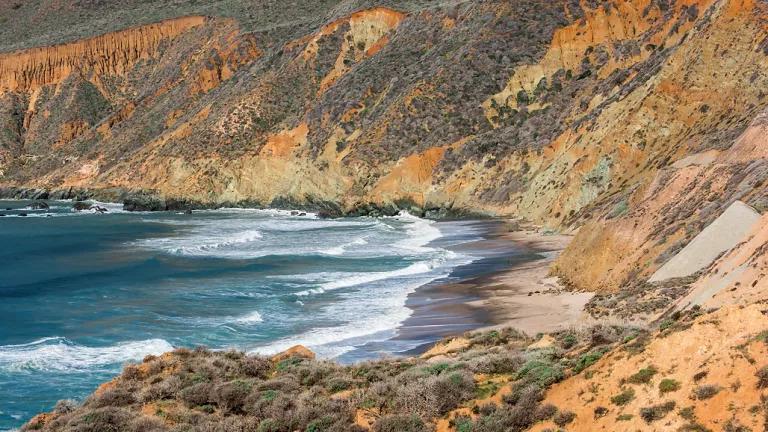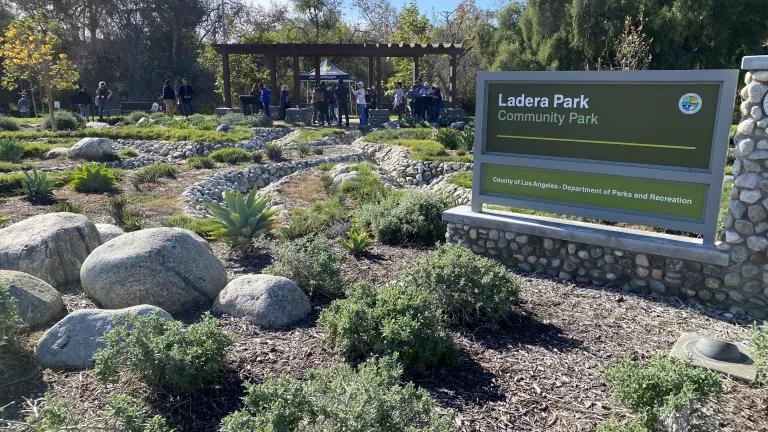The Snow Must Go On
Climate change is bringing many changes to California’s water system, but one of the most concerning is the loss of the Sierra snowpack caused by warming temperatures.

Here in California, we’re a little bit obsessed with our snowpack. Following the Department of Water Resources on its monthly wintertime trek to measure the Sierra snowpack has become a ritual for California water reporters and must-see t.v. for water wonks like me. I’ve yet to witness anyone get in a sword fight with their ski poles on this periodic trek, so why is it so riveting?
It’s riveting because the Sierra snowpack provides about a third of California’s annual water storage and supply. And without it, we’re in deep trouble. The state’s single largest “reservoir” is the Sierra Nevada snowpack, which holds approximately 15 million acre-feet per year on average. Climate change is bringing many changes to California’s water system, but one of the most concerning is the loss of the Sierra snowpack caused by warming temperatures. The state Department of Water Resources predicts that by 2050, temperature increases of 1 to 3 degrees Celsius are expected to reduce the Sierra Nevada snowpack by 25 to 40 percent, and by up to 65 percent by the end of the century.
But these projections might be optimistic. In 2015, California experienced unprecedented warmth and a mere 5% of normal snow accumulation in the Sierra Nevada. This weather, following several dry years and in combination with serious mismanagement due to lack of preparation for it, caused water shortages across the state and nearly wiped out entire populations of native salmon, ravaged migratory birds, and devastated habitat for species like mice and rabbits that suffered loss of their forest habitat when the drought killed an estimated 129 million trees in the Sierra Nevada.
These are the real, on-the-ground impacts of climate change that the new IPCC report on oceans and the cryosphere warns us are now happening across the globe. The cryosphere refers to those places on Earth that are frozen at least part of the year, and encompasses not just polar ice caps, and continental ice sheets found in Greenland and Antarctica, but also the high mountain regions that, historically, have been covered in snow and ice much of the year.
The cryosphere contains more than two-thirds of the earth’s fresh water, and it is disappearing. That is alarming for places like California that are dependent on mountain snowpack for our way of life. It is horrifying for places like Asia, where glacier-fed rivers flowing from the Himalayas supply water for a quarter of the world’s population and sustain unique mountain cultures and ecosystems.
What can we do about it? First and foremost, we need to pull out all the stops to rein in the climate crisis by ending our reliance on fossil fuel and investing in natural climate solutions to sequester carbon. But we also need to rapidly and intentionally reform our water systems to reflect the changes that are upon us. That means reducing reliance on snow-fed rivers and streams for human water use, and investing instead in water recycling, more efficient agricultural and urban water use, and designing our cities and buildings to capture and reuse rainwater.
It also means helping climate-threatened species to adapt and survive by sustaining the ecosystems they need. For example, in the western United States, that may include finding ways for cold-water fish to access the high mountain habitat above terminus dams. California is currently pursuing such an effort to allow endangered winter-run chinook salmon to spawn and rear above Shasta Dam on the Sacramento River. (The Trump Administration is, of course, trying to torpedo that effort, but that’s another story….) It means thinking big about protecting and restoring much of the wetland habitat that we’ve destroyed over the last half century that acts as both an effective carbon sink and as migratory habitat for birds. It means replanting and restoring forests that also sequester carbon and have been wiped out from years of mismanagement.
This latest IPCC report is more than a worrisome alarm bell. It is the latest in a series of warnings that lay the groundwork for reforming our relationship with nature. It’s time to take up the call.



